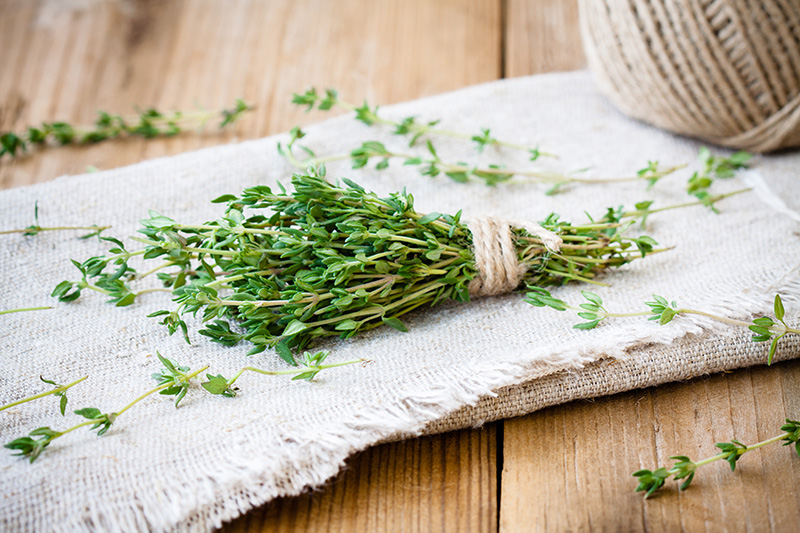It's easy to get answers about health and nutrition! Just send your question by email to [email protected] and Dr. Harlan will respond to selected questions of general interest. Answers will be posted in the Ask Dr. Gourmet newsletter (sign up now!) and archived in the Ask Dr. Gourmet section of the website.
Please note that the Ask Dr. Gourmet feature is restricted to questions regarding food and nutrition. Due to the many questions we receive, not all questions may be answered. For more specific questions about your individual health, please contact your doctor. About Timothy S. Harlan, MD, FACP, CCMS | Terms of Use | Privacy Policy
Ask Dr. Gourmet
Is it safe to eat thyme stems?
Do you know if it is safe and/or healthy to eat the stems/woody portion of the thyme herb if they are diced up? I often use thyme in cooking and the little stems frequently end up in my cooking. I also have read that you can use them to make salt rubs.
Dr. Gourmet Says...

Great question(s). I (and often my wife) spend a lot of time plucking the herbs off of their stems. The stems of herbs vary in their texture from the more stick-like to a texture that is softer and more edible. Herbs like thyme, oregano and rosemary are more stick-like and things like parsley and cilantro having a softer, more edible texture.
In truth, this is a matter of personal preference. For me, I prefer to not use the more stick-like herb stems in my recipes but would not hesitate to include something like parsley or cilantro stems.
There are a few ways to approach this depending on your preference. When you have an herb such as thyme, it works great to put whole sprigs in your recipe. When you are cooking the dish some of the leaves may come off bu the stem stays intact and you can simply remove the stems when you are done. Alternatively, you can pluck the leaves and add them to your dish. The stems can be dried and used for the salt rubs that you ask about (more on this in a bit).
The technique of adding whole stems to a dish for an herb such as parsley or cilantro won't work as well. The stems cook and become limp making them hard to remove from the dish. As such, I prefer to pluck my cilantro and discard the stems. That doesn't mean you have to discard the stems. When you are chopping parsley, basil or cilantro, for example, there is no reason at all to not chop the stems along with the leaves. However, the further toward the root end of the stem you go, the less delicate they are so you might want to cut the first few inches off of the stem and discard those (or dry them for your salt rub).
Salt rubs can be a great idea. They are going to bring a ton of flavor to your dish, especially things like grilled or broiled seafood or chicken. For your leftover stems, you can dry them in an oven at 170°F for about an hour and then crush them in a mortar and pestle or blender until they are a fine powder and then mix with an equal amount of salt. It is a good idea to experiment with one or two herb stems at a time until you get the flavors you love.
Lastly, there is no reason to think that this is anything but healthy for you. Herbs are a great way to bring both terrific flavor to your food and help you reduce the amount of added salt as a seasoning. One thing to keep in mind is that when you dry herbs it does change the flavor somewhat. Fresh basil and dried basil are two very distinct flavors, for example, while there is less difference between dried rosemary and fresh. The flavor of the dried herb is more intense and a good rule of thumb is a 1 to 3 ratio - 1 teaspoon of dried rosemary is about the same flavoring as 2 teaspoons of fresh.
Here are a few of my recipes that use thyme:
Poached Salmon with Mustard Thyme Vinaigrette
Quickie Thyme and Mustard Crusted Pork Chops
Lemon Thyme Redfish
Orange Thyme Chicken
Bacon Thyme Potato Salad
Mustard Thyme Penne with Chicken
Thanks for writing,
Timothy S. Harlan, MD, FACP, CCMS
Dr. Gourmet
